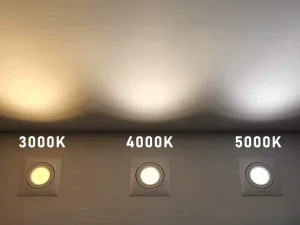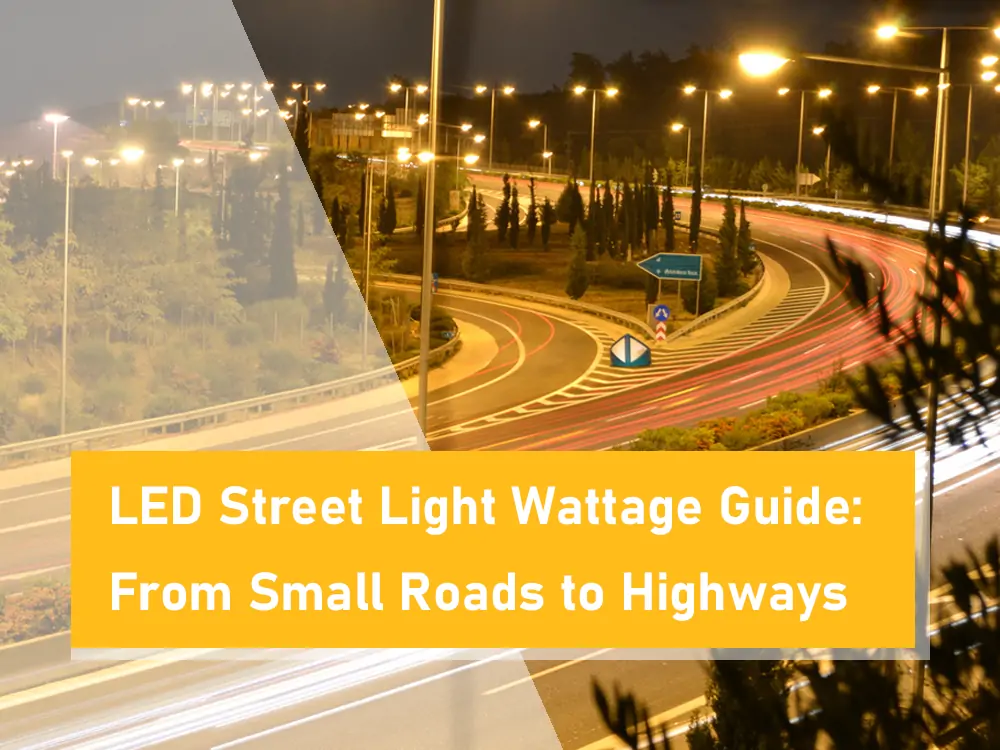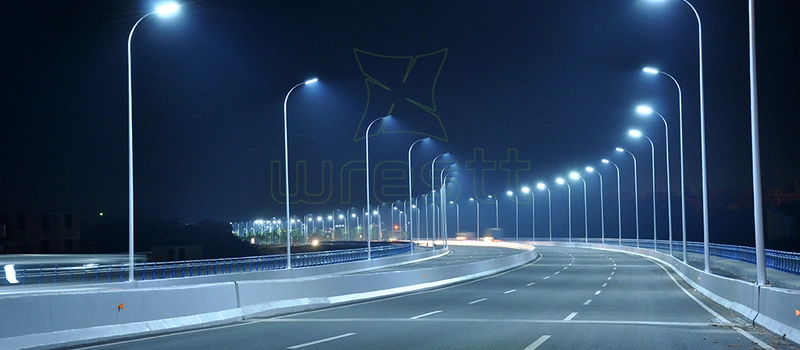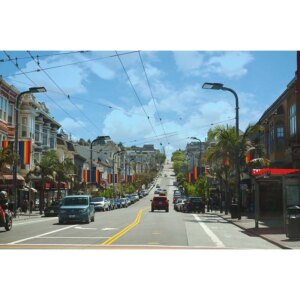Introduction:
You might have seen light types with 3000K, 4000K, or 5000K markings when buying outdoor lighting. But what do these numbers mean? In plain terms, these figures determine the “warmth” or “coolness” of the light. 3000K gives a warm, yellowish light, 4000K brings in a crisp, neutral white, and 5000K produces a bright, daylight-like light. Though they might sound confusingly close, each color temperature has its best use cases, benefits, and places. Getting it wrong can make an outdoor space unflattering or not light enough. 3000K VS 4000K VS 5000K, this guide helps you pick the perfect color temperature for your space.
What is Color Temperature?
Let’s begin by learning color temperature before comparing 3000K VS 4000K VS 5000K.
Color temperature is the color of light produced by a bulb. It is measured in Kelvins (K). Lower Kelvin ratings equal warmer, yellower light. Higher Kelvin ratings equal cooler, bluer light.
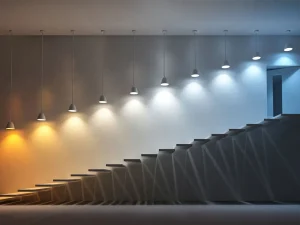
Example:
- 3000K is like a warm, gentle light.
- 4000K looks neutral, not warm or cold.
- 5000K looks bright and like daylight.
Choosing the right color temperature dictates how a space will feel. It can feel warm, lively, or clean in a space.
Why Color Temperature Matters for Outdoor Lighting
Outdoor spaces need to perform multiple functions. Some spaces need warm, inviting light. Others need clear, bright visibility for security. The right color temperature helps:
- Improving security.
- Emphasizing landscapes.
- Boosting curb appeal.
- Establishing the right ambiance.
Thus, it is essential to make informed choices.
3000K VS 4000K VS 5000K: Outdoor Lighting Comparison
| Feature | 3000K | 4000K | 5000K |
| Light Color | Warm white, yellowish | Neutral white | Cool white, bluish |
| Mood | Cozy, inviting | Clean, balanced | Bright, energizing |
| Best Use | Porches, patios | Driveways, garages | Security, public spaces |
| Visibility Level | Moderate | High | Very high |
| Feel | Relaxing | Crisp and neat | Crisp and bold |
1. 3000K Outdoor Lighting: A Snug and Inviting Glow
What Does 3000K Light Appear Like?
3000K light emits a warm white light. The color is yellowish, similar to that of old incandescent bulbs. When you place 3000K lights outdoors, the area feels snug and inviting. The light is relaxing without being too dim.
Where is 3000K Best Utilized?
3000K lights are perfect for areas where you want to create a cozy ambiance. Excellent areas are:
- Front porches
- Patios
- Garden paths
- Outdoor dining spaces
They also work well for home use. Warm light creates homes that are warm and lived-in.
Pros of 3000K Outdoor Lighting
- Creates a cozy, inviting ambiance.
- Eliminates harsh shadows.
- Warm lighting brings out the glow of natural materials like wood and plants.
Cons of 3000K Outdoor Lighting
- It may be too low for security lighting requirements.
- It may be less rich in color than colder lights.
2. 4000K Outdoor Lighting: The Neutral Balance
What Does 4000K Light Look Like?
4000K lighting takes a middle ground between warm and cool colors. It produces a neutral white light that is not too biased towards the yellow or blue side. The result is a clean, crisp light that is still warm.
Where Is 4000K Best Applied?
4000K is good in utilitarian spaces where one wants good visibility without the cold feel of higher temperatures. It is ideal for:
- Driveways
- Garages
- Walkways
- Outdoor kitchens
Most commercial structures also prefer 4000K lighting. It gives a professional and clean look.
Pros of 4000K Outdoor Lighting
- Gives balanced visibility and warmth.
- It improves color rendering without being harsh.
- Useful in residential and commercial structures.
Cons of 4000K Outdoor Lighting
- Does not give as warm an atmosphere as 3000K.
- Less sharp than 5000K for very detailed tasks.
3. 5000K Outdoor Lighting: Bright, Sharp, and Striking
What Do Lights Look Like at 5000K?
5000K lights appear in a bright white or bluish tone. They are incredibly similar in color to daylight. This color temperature makes outdoor spaces very sharp and defined. It is excellent for security reasons and high-visibility areas.
Where Should 5000K Be Used?
If you need outdoor lighting for security or business, 5000K is an attractive choice. Best uses include:
- Parking lots
- Security zones
- Large backyard spaces
- Public spaces
5000K lighting also serves security cameras well, capturing details nicely.
Pros of 5000K Outdoor Lighting
- Enhances nighttime visibility.
- Enhances security and safety.
- It helps surveillance cameras take better photos.
Cons of 5000K Outdoor Lighting
- It is too harsh for relaxing spaces.
- Washes out warm colors in landscaping.
Each temperature is suited for a different use. Think about what is most valuable to you – ambiance or light.
Real-World Examples
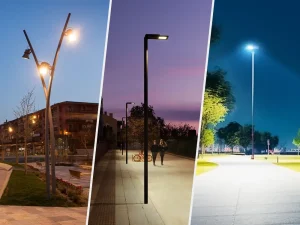
Residential Home Front Yard
One family installed 3000K lighting on the front porch and walkway. The cozy light gave the house a cozier feel in the evenings. Guests would comment on how comfortable the entryway was.
Commercial Parking Lot
A business installed 5000K lights for their parking lot. The lighting was so intense and daylight-colored that customers felt safer. It also helped their security cameras get better-quality footage.
Outdoor Restaurant Patio
An outdoor café employed 4000K lighting for its patio area. The area was crisp and inviting but not so formal that one couldn’t have long dinners.
Pitfalls to Avoid
- Selecting lights too cool for spaces where people relax: 5000K is perfect for security but too bright for patios or gardens.
- Not coordinating with the architecture: Traditional homes love warm lights. Modern homes love cool lights.
- Forgetting to use: Always synchronize the light temperature with the function of the area.
By not committing these mistakes, you can have an outdoor area that looks and feels just as it should. When deciding, always remember the primary purpose of the light and the mood you want to achieve. A family evening around the fire needs a soft glow, but a well-lit parking area or a yard equipped with security cameras will benefit from brighter, colder light. Also, consider your house or building’s appearance, landscape features, and how light will fall upon them. Matching your color temperature to your aesthetic and needs ensures that your exterior lighting is beautiful and practical.
Conclusion
Picking the right outdoor lighting temperature is small, but it makes a massive difference in your space’s overall look and feel. Each color temperature of 3000K VS 4000K VS 5000K serves a specific purpose. Warm 3000K lighting gives a cozy, welcoming ambiance suitable for patios, porches, and gardens. Conversely, neutral 4000K lighting balances warmth and brightness, which is most appropriate for utilitarian spaces like driveways, walkways, and garages. If safety and visibility mean the most to you, then the bright, vivid 5000K light gives you the ultimate sight, making open significant areas safer.
Finally, there is not a one-size-fits-all answer. Your needs, goals, and what you’re lighting up will help you decide the perfect color temperature for your exterior lighting. With an understanding of the difference between 3000K, 4000K, and 5000K lights, you can confidently choose the light that adds beauty, security, and functionality to your environment. Thoughtful exterior lighting doesn’t just illuminate your home—it makes it glow.

